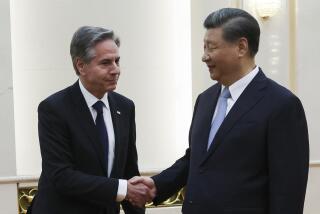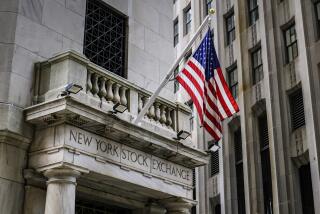China Faces Potential Crisis, Despite Economic Growth
HONG KONG — On paper, China’s economy looks great: Growth is moving forward at a rate of 7.9% a year, companies are racing to modernize, and the country is on the brink of joining the World Trade Organization.
A closer look, however, reveals an unsettling scene. Reforms are throwing tens of millions out of work. Public debt is rising, export growth falling, and banks are drowning in a sea of bad loans. Rural incomes are lagging, and drought has left 23 million Chinese without enough drinking water.
Though China’s growth rate has fallen steadily to 7% or 8% in recent years from a peak of 13.6% in 1992, according to official data, a first-half growth rate of 7.9% raised hopes that China might drag its anemic neighbors out of the doldrums.
Such robust numbers would be the envy of other countries, but Western economists view Chinese statistics as grossly exaggerated, padded with what the Chinese themselves call “water content.” They believe growth in 1997-98--officially reported at 8.1%--was closer to zero.
“There’s a saying: ‘Officials make data, and data make officials,’ ” said Thomas Rawski, a professor of economics at the University of Pittsburgh who has studied the issue. “I fear the ‘water content’ in the most recent GDP announcement is considerable.”
Just as China appears on the verge of replacing Japan as the main force driving East Asia’s economic growth, the sources of potential crisis appear more threatening.
“I think China is running out of time,” said Gordon Chang, author of the new book “The Coming Collapse of China” and one of the most pessimistic observers.
Chang, an American lawyer who has spent most of the last two decades in China, said WTO entry and the market-opening required will hammer farms and factories that aren’t reforming fast enough.
China’s exports rose only 8.8% in the first half of 2001 to $124.6 billion--far below the 20% jump in the first half of last year.
Finance Minister Xiang Huaicheng said Sunday that China’s export growth may fall below the 10% target for 2001 because of the global slowdown, but economic growth still will be at least 7%.
“This year, the export growth target is 10%. A little below 10% is also possible. This shows China and the government is facing difficulties,” Xiang said after the close of a meeting of Asia Pacific Economic Cooperation Forum finance ministers.
To encourage growth, Beijing has been throwing money at building highways and other projects. Total spending for the first half of the year rose 15.1% to $143 billion.
That is rapidly bulking up government debt at a time when the Chinese treasury faces the strain of bailing out struggling banks.
State industry has shed about 30 million workers in the last five years, creating a restive army of unemployed that worries Beijing.
With massive overcapacity in numerous industries, many companies still survive only by borrowing more money that will never be repaid, said Nicholas Lardy, senior fellow at the Brookings Institution in Washington. “The rate at which nonperforming loans are appearing is quite discouraging,” he said.
At the same time, income growth is slowing in the countryside where almost 70% of China’s nearly 1.3 billion people live.
Still, most agree that China is in better shape than it was in the late 1990s at the height of the Asian financial crisis.
A wave of euphoria inspired by Beijing’s success in being awarded the 2008 Olympics has boosted Chinese optimism. Officials say heavy spending on Olympic facilities could add as much as 0.4% to annual growth rates in the next seven years.
Official figures say China should grow by 7% this year--far above the 2.9% forecast for the region by the Pacific Cooperation Council.
“Most of the evidence suggests that the long slide in the growth rate is over,” Lardy of the Brookings Institution said.
Yet, in a discouraging sign for its struggling neighbors, developing China seems to have little to offer to others. Imports from other Asian countries besides Japan are low for an economy this large, and Chinese investment abroad is just a trickle.
Chinese companies are shifting to making computer chips and other higher-profit products, adding to competition in tech industries.
“Such a transformation has to boost China’s growth at the expense of the other economies,” said Thomas Chen, director of the China Business Center at the Hong Kong Polytechnic University.
More to Read
Sign up for Essential California
The most important California stories and recommendations in your inbox every morning.
You may occasionally receive promotional content from the Los Angeles Times.










